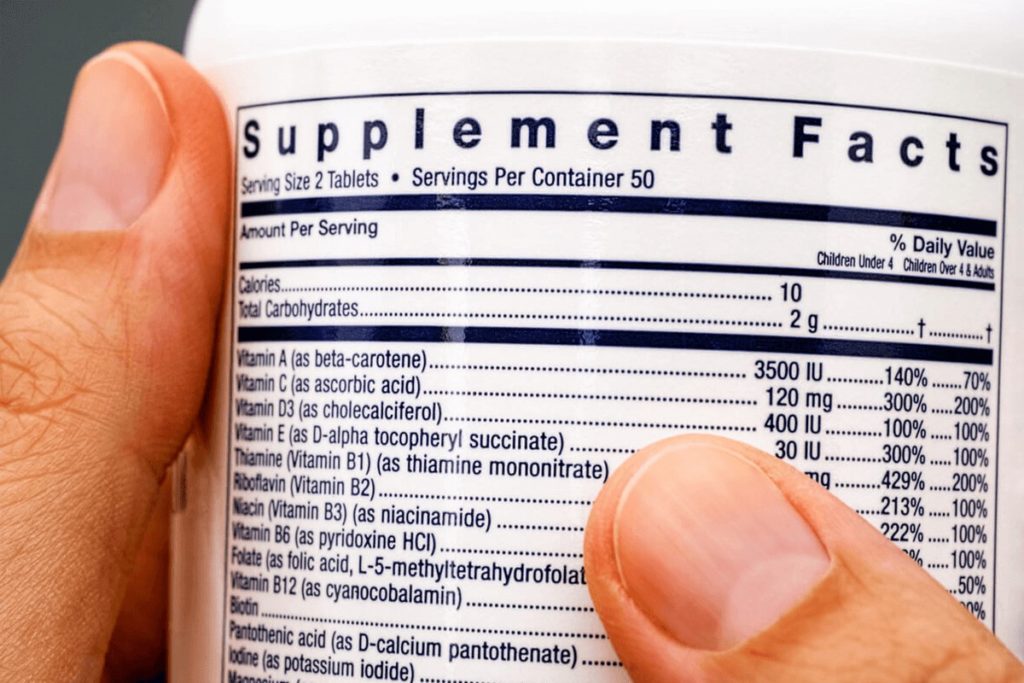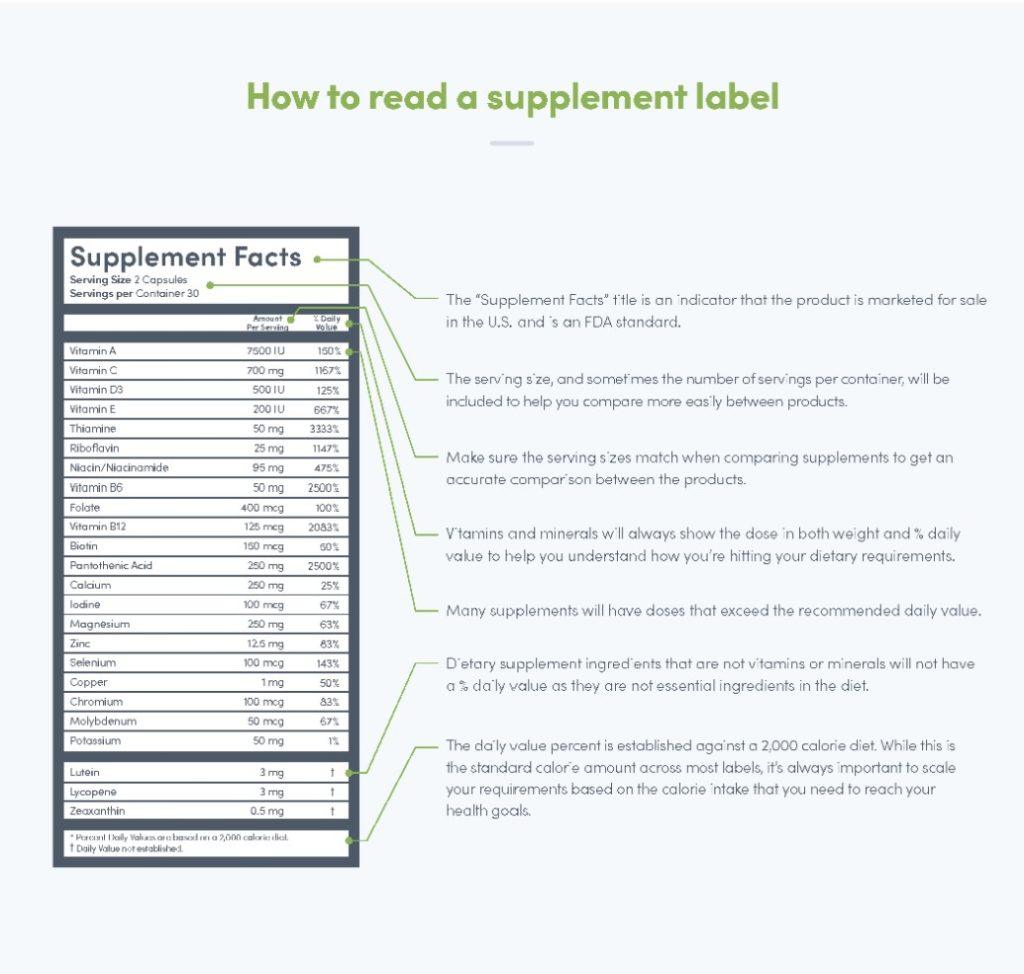When selecting a multivitamin, consider the following factors.

Check the brand & manufacturer
One of the key information you need to find out even before you look into the facts label is to learn about the brand of the product and its manufacturer. overwhelming majority of the supplement brands in the market place don’t manufacture their own products. They use a third party manufacturer instead. That in itself, is not necessarily a bad thing. However, one should consider that a great deal of herbal supplement manufacturers are not cGMP (Certified Good Manufacturing Practice) approved. As a result, there is a very good chance that you might be getting a compromised multivitamin product.
So, how does one identify the manufacturer on the label?
Look carefully for the label that says Manufactured By or simply match the small labelled company name to be the same as the large brand name over the most visible portion of the label. I would be cautious in purchasing products that says Manufactured For, Marketed By, Distributed By, or any other description that does not clearly identify the manufacturer itself. It might be by design (and intent) that it is not so clearly seen!
Check for quality standards
Many products are manufactured according to strict quality, purity, and safety standards. Search for products manufactured according to the U.S. Food and Drug Administration’s (FDA) Good Manufacturing Practices (GMPs) to ensure the product is safe and its contents are accurately indicated on the label.
Assess the supplement facts label
When choosing a multivitamin, compare the supplement facts labels of different brands and products. Look for a comprehensive multivitamin that contains at least 100 percent of the RDA for most vitamins and minerals to help ensure you’re meeting your minimum nutrition requirements. Note I said, minimum requirements!

RDA stands for Recommended Daily Allowance.
Instituted since 1941 by Food and Nutrition Board (FNB), RDA is and I quote from a 2002 NIH (National Health Institute) publication entitled “A Brief Review of the History and Concepts of the Dietary Reference Intakes,” “is NOT an appropriate value to use to assess the adequacy of intakes” (1). The reason being and I quote again “Recommended Dietary Allowance (RDA) is an estimate of the minimum daily average dietary intake level that meets the nutrient requirements of nearly all (97 to 98 percent) healthy individuals in a particular life stage and gender group.” Because of the RDA’s inadequacy, many health governmental agencies have gotten together to come up with a more adequate values. Hence, the creation of new and improved intake guidelines such as the DRIs (Dietary Reference Intakes). The DRIs include the Estimated Average Requirement (EAR), the RDA, the Adequate Intake (AI), and the Tolerable Upper Intake Level (UL) (1).
But what you will see most often in a multivitamins label are the DVs in percentage (DV %). Daily Values developed by U.S. Food and Drug Administration (FDA) are comprised of two sets of reference values for reporting nutrients in nutrition labels—the Daily Reference Values (DRVs) and the Reference Daily Intakes (RDIs). To limit consumer confusion, the single term “Daily Value” is used to designate both the DRVs and RDIs (2).
As valiant the effort is by the governmental agencies to determine a singular set of standard as “good and healthy” for the entire population, the levels given might still not be sufficient for optimal health especially considering each individual may have different nutrient requirements. As a result, it is important to take a multivitamin product that is first wholesome food based and fortified with individual vitamin and mineral contents that are designed for optimal health rather than just adequate health.
Consider allergen claims
The Food Allergy Labeling and Consumer Protection Act requires product labels to indicate the presence of the eight most common food allergens, including milk, eggs, fish, shellfish, tree nuts, peanuts, wheat, and soybeans. Since these allergens are commonly found in dietary supplements, consumers with food allergies or intolerances should look for products that are clearly labeled as allergen-free. (3)
Avoid products with fillers, artificial colors, additives, or sweeteners
Some dietary supplements contain added ingredients to improve the flavor, appearance, and shelf life of the product. These added ingredients provide no nutritive value to the product and some evidence suggests that certain added ingredients may pose a threat to your health. For example, titanium dioxide and certain artificial colors have been linked to cancer and hyperactivity in children. (4)(5)(6)(7) Although more research is needed to better understand the negative effects of added artificial ingredients, choosing a high-quality multivitamin without these ingredients may be the best option.
Find a multivitamin specific to your needs
With many multivitamin formulations available, it’s best to choose a product specifically formulated for your gender, life stage, or condition (e.g., pregnancy). (8) Your integrative or holistic healthcare practitioner can help you determine which multivitamin formula is best for your needs.
We will briefly discuss what you may want to look for in a Multivitamin product for Women (Part IV) and Men (Part V) in upcoming blogs of this series.
Portions of this blog is sourced with permission from Fullscript.com.
References:
(1) A Brief Review of the History and Concepts of the Dietary Reference Intakes, Chapter 4, the description of the DRIs in the macronutrient report (IOM, 2002a).
(2) https://ods.od.nih.gov/HealthInformation/dailyvalues.aspx
(3) Dwyer, J. T., Bailen, R. A., Saldanha, L. G., Gahche, J. J., Costello, R. B., Betz, J. M., … Herrick, K. A. (2018). The dietary supplement label database: Recent developments and applications. The Journal of Nutrition, 148(suppl_2), 1428S-1435S.
(4) Canadian Centre for Occupational Health & Safety. (2020, August 11). OSH answers fact sheets. Retrieved
(5) ConsumerLab.com. (2015, April 11). Titanium dioxide is listed as an ingredient in my supplement. Is it safe? Retrieved from https://www.consumerlab.com/answers/is-titanium-dioxide-in-my-supplement-safe/titanium_dioxide/
(6) Kobylewski, S., & Jacobson, M. F. (2012). Toxicology of food dyes. International Journal of Occupational and Environmental Health, 18(3), 220–246.
(7) McCann, D., Barrett, A., Cooper, A., Crumpler, D., Dalen, L., Grimshaw, K., … Stevenson, J. (2007). Food additives and hyperactive behaviour in 3-year-old and 8/9-year-old children in the community: a randomised, double-blinded, placebo-controlled trial. The Lancet, 370(9598), 1560–1567.
(8) National Institutes of Health. (2019, October 17). Multivitamin/mineral supplements. Retrieved from https://ods.od.nih.gov/factsheets/MVMS-HealthProfessional/
